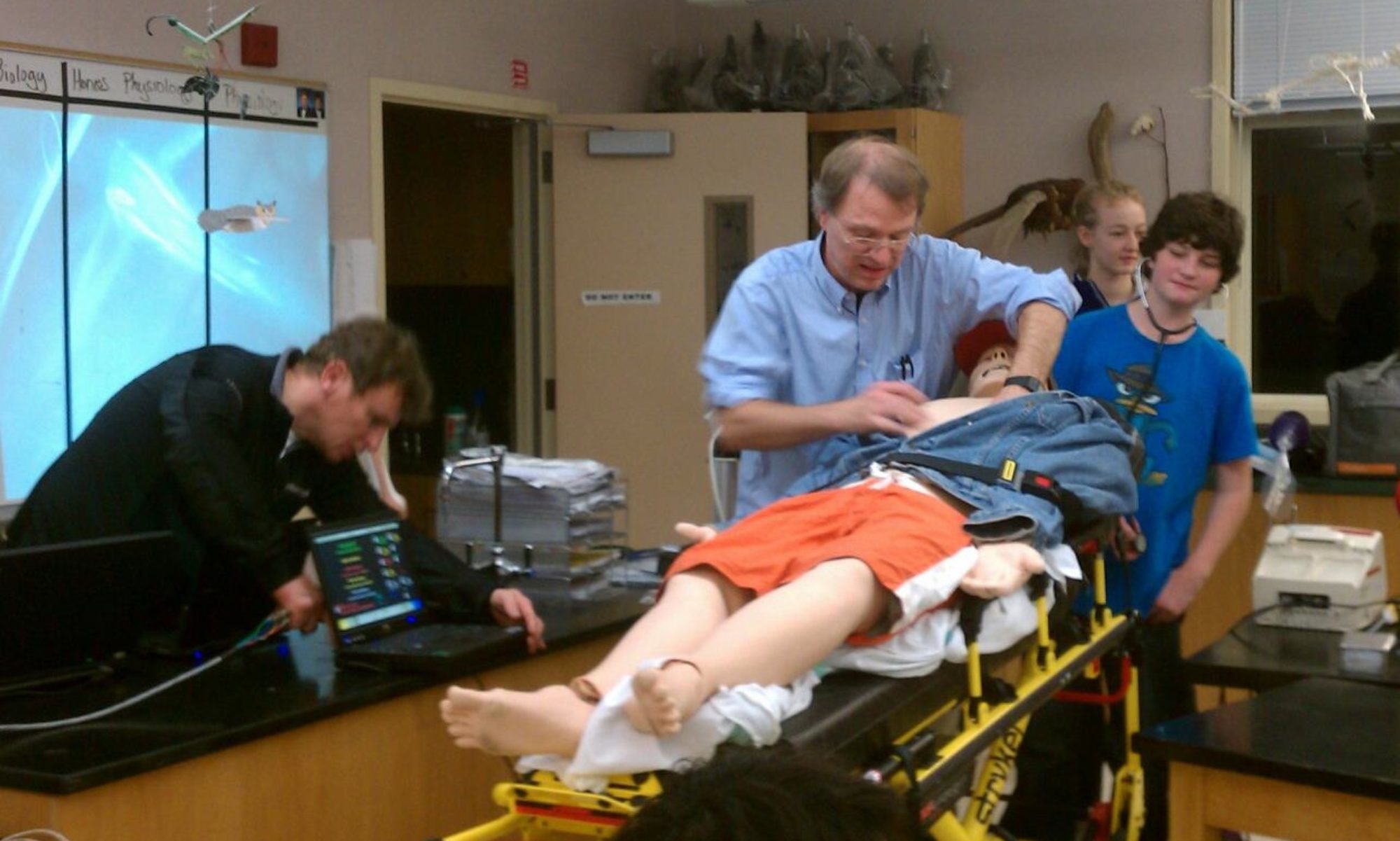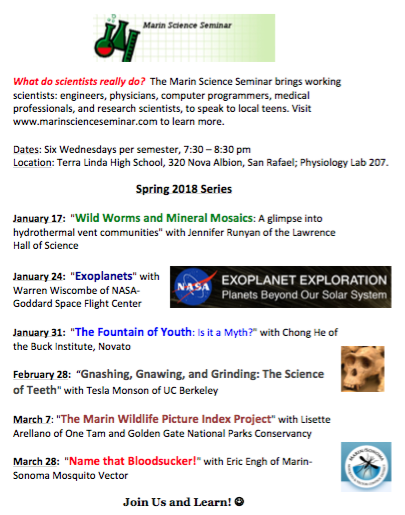The Fall 2017 Marin Science Seminar (MSS) Internship Application Period is now open. We will accept applications for videography internships from July 27th until September 20th, 2017. The internship period will run from approximately September 22nd until November 29th.
 |
| Medical Simulation at Marin Science Seminar |
Explore science and technology, meet amazing scientists and medical professionals, gain experience for your resume and college applications, develop a portfolio! Our past interns are now students at or graduates of Cal Poly San Luis Obispo, CalTech, Chico State, Harvard, Humboldt State, MIT, Northwestern, Scripps College, Seattle University, Sonoma State, UC Berkeley, UC Davis, UC Irvine, UC Santa Barbara, and UC Santa Cruz.
Marin Science Seminar interns attend and assist with a minimum of 6 science seminars per academic year (there are 12 per year) during which they meet the speakers and assist with various logistical duties. Sessions take place on Wednesday evenings at Terra Linda High School in San Rafael (320 Nova Albion, Room 207) during the school year. Interns arrive the evening of a session at 7 pm and are free to leave once breakdown is completed (between 8:30 and 9 pm).
Videography interns record sessions, edit and upload session recordings, and create teaser videos for upcoming events.
Interns may also research and create materials about event topics, create and distribute outreach materials, and engage in social networking and online development of Marin Science Seminar’s mission to attract more students to the fields of science, technology and math. Training is provided for some intern tasks.
Our internships are also offered in conjunction with the Marin County School to Career (StC) Partnership. Students attending a public high school in Marin County may apply for StC credit. Complete and submit a S2C internship application to your school’s School-to-Career representative or visit them for the complete packet. About the Marin County School-to-Career Partnership
| Marin Science Seminar Videography internship |
| Attend and assist at MSS sessions, 6 Wednesday evenings per semester, 7 – 9 pm |
| At Terra Linda High School, 320 Nova Albion, San Rafael, Room 207 |
| Submit 2 video samples |
| Able to edit video using video editing software |
| Facebook account |
| Recording equipment and SC cards provided |














